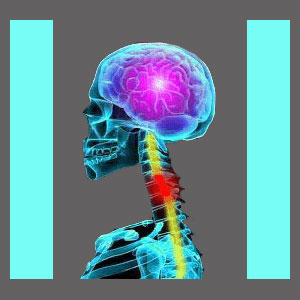
It is important to keep current on the latest spinal stenosis research in order to better understand your diagnosis and treatment options. Many patients, and unfortunately, also many doctors, are not up-to-date on the latest news in the spinal stenosis sector of medicine. These people rely on antiquated information and are simply out of touch with the newest diagnostic practices and therapy choices.
We at The Cure Back Pain Network take our jobs as educators and advocates very seriously. We are always on the lookout for relevant news and research findings that affect our vast readership of friends and family. Of course, this website spinal-stenosis-treatment.org is completely focused on providing patients with everything related to our core topic: spinal stenosis. To this end, we offer this regularly updated articles featuring some of the most important research findings related to central and foraminal stenosis care.
Central Spinal Stenosis Research
There was at time when all central spinal stenosis was viewed as being dangerous, degenerative and symptomatic. Luckily, science has discovered that central stenosis is basically a normal part of spinal aging and has ruled the condition mostly harmless in mild to moderate degrees. It is now expected for people past middle age to demonstrate some degree of stenosis in the central canal in the neck and lower back regions. The condition is no longer considered uncommon or inherently cause for concern.
However, stenosis can become a real problem when the spinal cord or cauda equina begins to suffer compression. In some cases, conservative care must be rendered for symptom control and in other cases the patient presents candidacy for surgical intervention. Of all back pain diagnoses, central stenosis enjoys the very best curative results from surgical treatment. Although invasive, these techniques are highly effective at resolving the central canal stenotic formations and returning the patient to a normal life, free from pain and dysfunction.
Surgical care has advanced tremendously in the past 2 decades, with minimally invasive procedures becoming the norm. Anterior approaches to care allow some patients to heal faster and better than old fashioned dorsal incisions and related muscular dissection. There are also implant devices such as the X-Stop and the Coflex that provide alternatives to traditional treatment for many stenosis patients.
Neuroforaminal Stenosis Research
The concept of pinched nerves has been around since before modern testing was able to confirm the diagnosis. However, the advent of CT and MRI imaging led to a drastic increase in the diagnosis, often with no evidence that neurological compression was taking place. Patients complained of pain and the diagnostic tests showed narrowed foraminal spaces at approximately the correct level to correspond with symptoms. Therefore the diagnosis of foraminal stenosis became an epidemic reality in the dorsalgia sector of medicine.
Research has now shown that the majority of pinched nerves have been misdiagnosed. In order for a nerve to be truly compressed, virtually the entire foramen would have to be sealed off, which is rarely the clinical impression. Additionally, research on the expected symptoms of a pinched nerve has shown that chronic pain is not logical or often seen in true compressive neuropathies. Instead, the correct expression might begin as pain and tingling, but should progress to numbness, weakness and dysfunction before long, since the nerve will stop signaling all together. From these findings it is clear why so few pinched nerve treatments and surgeries provide satisfying outcomes in the past. In essence, they were misdirected and therefore ineffective.
Doctors now have much improved diagnostic guidelines and tools to identify compressive neuropathy conditions, including the use of nerve conduction testing, comprehensive symptomatic correlation using nerve mapping and truly advanced imaging technology that can provide greater detail than ever before.
Spinal Stenosis Research Updates
Stay tuned to this section to stay informed of new research as it is made available. Links to the relevant information are contained within each blurb:
There are currently many advances in laser surgery and endoscopic surgery occurring in the spinal stenosis treatment sector. Doctors are able to treat the interior of the spinal canal for stenosis without less collateral damage to healthy tissues than ever before.
Researchers have discovered more clues to the congenital links of spinal stenosis.
New research shows that ligamentum flavum hypertrophy and posterior longitudinal ligament ossification are often major players in stenosis.
Disability from spinal stenosis continues to be a big problem. However, new treatments can reverse much of the damage and lead to recovery even for patients who have suffered debilitating conditions for years.
Although feared by patients, it is now known that paralysis due to spinal stenosis is extremely rare and almost completely preventable as long as the patient has access to indicated care.
Coaching has been proven to be just as effective as pharmaceutical pain management for patients with chronic stenosis pain, without any of the risks associated with drug therapy. Pain coaching may be the perfect solution for patients who are trying to avoid surgery using conservative measures of care.
Spinal Stenosis>Spinal Stenosis Advice > Spinal Stenosis Research





